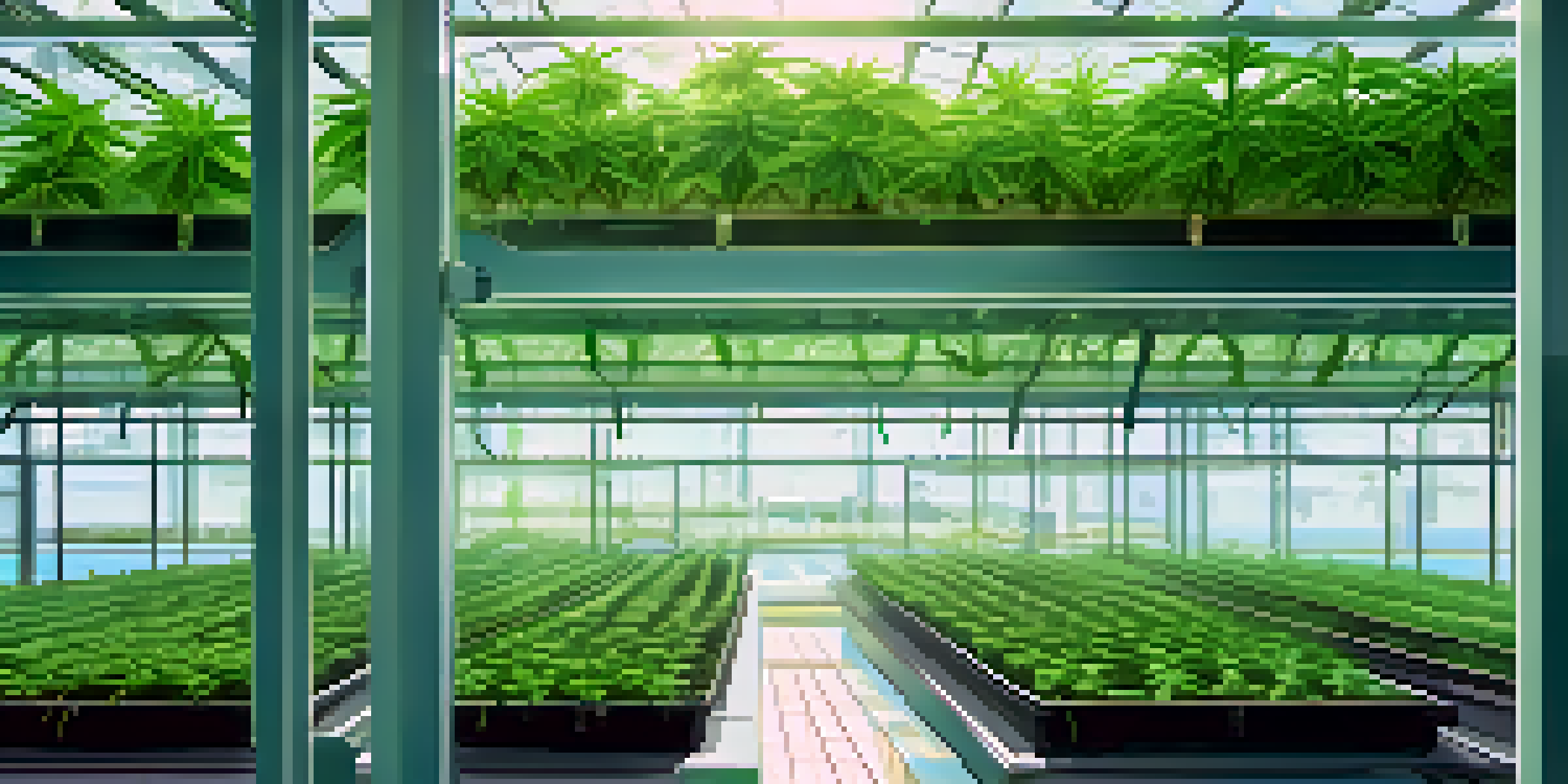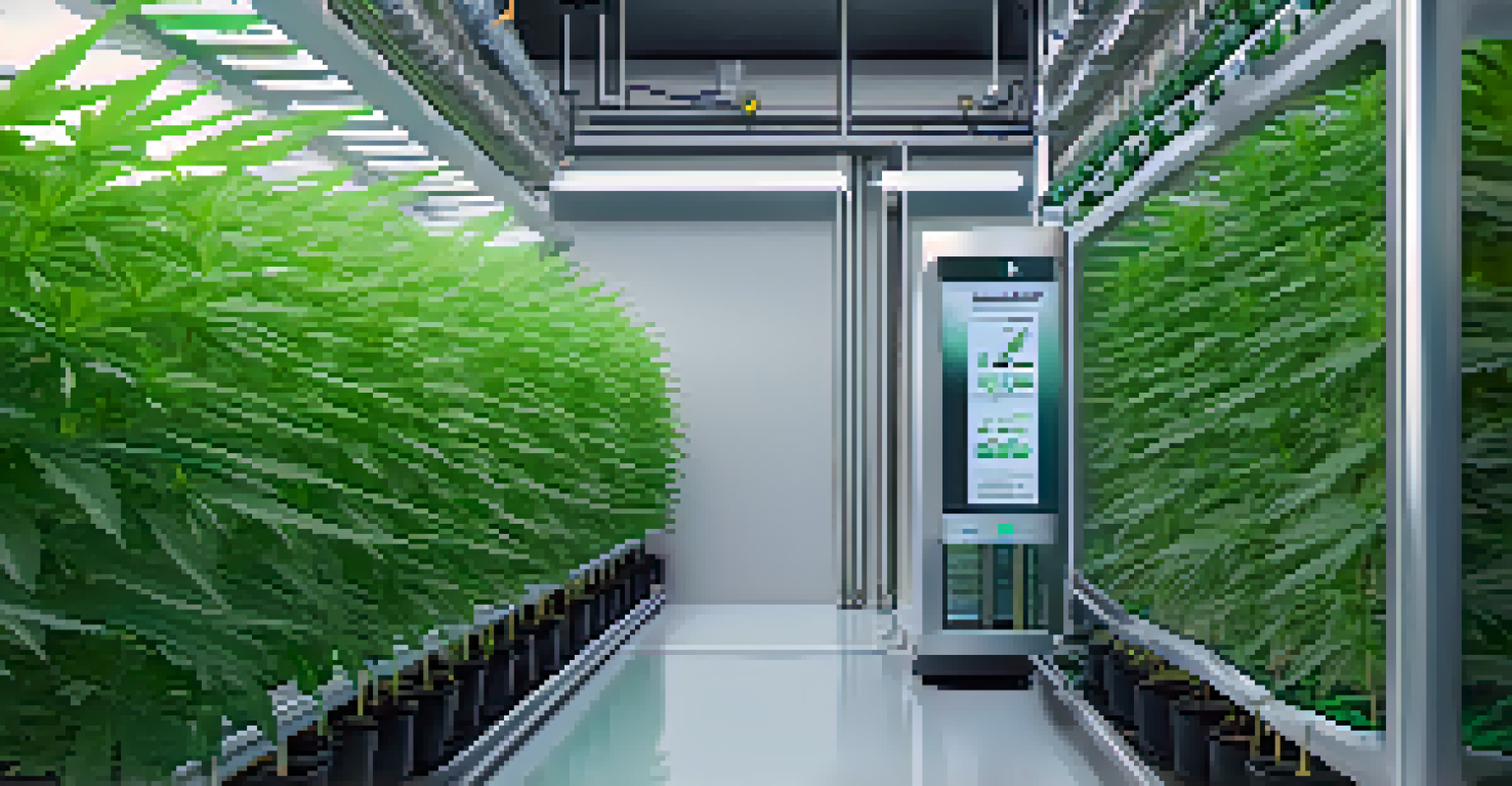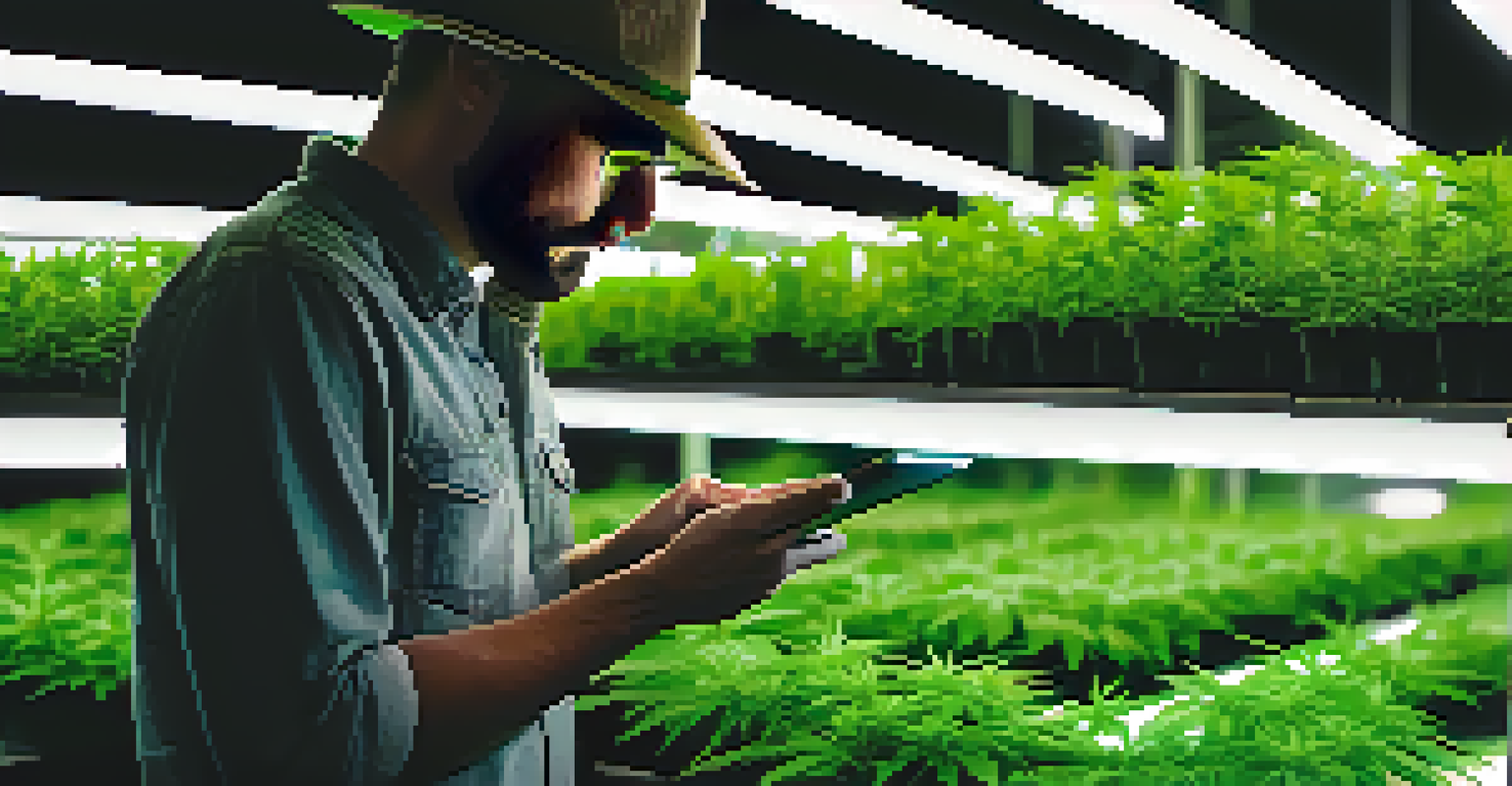Advanced Nutrient Delivery Systems for Cannabis Plants

Understanding Nutrient Delivery in Cannabis Cultivation
Nutrient delivery is crucial in cannabis cultivation, as plants require specific elements to thrive. Just like humans need a balanced diet, cannabis plants rely on nutrients such as nitrogen, phosphorus, and potassium. Understanding how these nutrients work can help growers optimize plant health and yield. Advanced nutrient delivery systems play a pivotal role in ensuring these essential elements are available at the right time and in the right amounts.
The key to healthy plants is understanding their nutrient needs and ensuring they receive them at the right time.
Traditional methods of nutrient delivery, such as soil amendments, can be effective, but they often lack precision. The challenge lies in providing nutrients in a way that plants can absorb them efficiently. This is where advanced systems come into play, offering a more targeted approach that can lead to healthier plants and higher yields. By utilizing technology, growers can significantly improve their nutrient delivery processes.
As the cannabis industry continues to evolve, so do the methods of cultivation. Growers are increasingly turning to advanced nutrient delivery systems to enhance growth and productivity. These systems not only ensure that plants receive the necessary nutrients but also help in minimizing waste, making them a sustainable choice for modern cannabis farming.
Types of Advanced Nutrient Delivery Systems
Several advanced nutrient delivery systems have emerged, each with unique advantages. Hydroponics is one such method, where plants are grown in nutrient-rich water instead of soil. This approach allows for precise control over nutrient levels, leading to faster growth rates and improved crop quality. Other systems include aeroponics and aquaponics, which further enhance nutrient delivery by combining various growing techniques.

Another popular option is the use of automated nutrient mixers and dosers. These devices ensure that the right amount of nutrients is delivered to plants at specific intervals. This automation not only saves time for growers but also minimizes the risk of over-fertilization, which can harm plants. By integrating technology into nutrient delivery, growers can achieve a level of consistency that was previously challenging.
Precision in Nutrient Delivery
Advanced nutrient delivery systems enhance cannabis growth by allowing for precise application of essential nutrients.
Soil-based systems have also benefited from advancements, including the use of slow-release fertilizers and mycorrhizal fungi. These methods enhance nutrient uptake while promoting soil health. By understanding the different types of nutrient delivery systems available, growers can choose the best option that aligns with their cultivation goals and environmental conditions.
Benefits of Advanced Nutrient Delivery Systems
The primary benefit of advanced nutrient delivery systems is improved plant health. With precise nutrient application, cannabis plants can grow more vigorously, leading to better yields and higher potency. Moreover, these systems often reduce the risk of nutrient deficiencies, which can stunt growth and affect overall quality. Healthy plants are not only more productive but also more resilient to pests and diseases.
In the world of cultivation, technology is not just a tool; it's the bridge to enhanced growth and sustainability.
Another significant advantage is the efficiency of resource use. Advanced systems minimize nutrient waste, ensuring that every drop counts. For example, hydroponic systems recirculate water, reducing the need for excessive irrigation and conserving resources. This efficiency is not just beneficial for the environment; it also translates to cost savings for growers.
Lastly, the precision offered by these systems allows for better data tracking and analysis. Growers can monitor nutrient levels in real-time, adjusting their approach as needed. This data-driven approach empowers cultivators to make informed decisions, ultimately leading to optimized growth and improved profitability.
Integrating Technology in Nutrient Delivery
The integration of technology into nutrient delivery systems has transformed cannabis cultivation. Smart sensors, for instance, can monitor soil moisture and nutrient levels, providing real-time feedback to growers. This information allows for precise adjustments, ensuring that plants receive exactly what they need when they need it. By leveraging technology, growers can take a more scientific approach to cultivation.
Mobile applications and software solutions are also making it easier for growers to manage nutrient delivery. These tools can help track nutrient schedules, automate feeding times, and even provide reminders for when to check nutrient levels. With everything at their fingertips, growers can focus more on plant care and less on manual tasks, enhancing overall efficiency.
Sustainable Farming Practices
Modern nutrient delivery methods promote sustainability by minimizing waste and reducing the reliance on synthetic fertilizers.
As the cannabis industry grows, the demand for innovative solutions will only increase. Embracing these technological advancements not only benefits individual growers but also contributes to the industry's evolution. By integrating technology into nutrient delivery, cultivators can push the boundaries of what's possible in cannabis cultivation.
Challenges in Advanced Nutrient Delivery Systems
While advanced nutrient delivery systems offer numerous benefits, they are not without challenges. One major issue is the initial cost of setting up these systems. Many growers may hesitate to invest in technology, especially if they are accustomed to traditional methods. However, it’s essential to view this investment as a long-term strategy that can yield significant returns over time.
Another challenge lies in the complexity of managing these systems. Growers must familiarize themselves with new technologies and processes, which can be daunting. Understanding the nuances of each system is crucial to maximizing its potential. Education and training resources can help bridge this gap, allowing growers to confidently navigate advanced nutrient delivery methods.
Lastly, growers must consider the environmental impact of their systems. While many advanced methods are designed to be more sustainable, the technology still requires energy and resources to operate. It's vital for growers to stay informed about best practices and make conscious choices that align with their sustainability goals.
Future Trends in Nutrient Delivery for Cannabis
The future of nutrient delivery systems in cannabis cultivation looks promising, with continuous advancements on the horizon. One notable trend is the growth of vertical farming, which optimizes space and resources while enhancing nutrient delivery. As urban agriculture gains popularity, efficient systems will become essential for meeting the demands of modern consumers.
Another trend is the increased focus on organic and sustainable practices. Growers are seeking ways to deliver nutrients without relying on synthetic fertilizers. Innovations such as biochar and organic amendments are gaining traction, providing an eco-friendly alternative that still promotes healthy plant growth. This shift reflects a broader movement toward sustainability in agriculture.
Technology-Driven Cultivation
The integration of technology in nutrient delivery systems enables growers to monitor and adjust nutrient levels in real-time for optimal plant health.
Finally, the integration of artificial intelligence (AI) and machine learning in nutrient delivery systems is set to revolutionize cultivation. These technologies can analyze data patterns and make predictive adjustments to nutrient levels, optimizing growth in real time. As these innovations become more accessible, they will empower growers to achieve unprecedented levels of efficiency and productivity.
Conclusion: Embracing Advanced Nutrient Delivery Systems
In conclusion, advanced nutrient delivery systems represent a significant leap forward in cannabis cultivation. By understanding the various methods available and their benefits, growers can make informed choices that enhance plant health and productivity. Embracing these systems not only improves individual outcomes but also contributes to the overall advancement of the cannabis industry.
As technology continues to evolve, staying up-to-date with the latest trends and practices will be crucial for growers. Investing in education and resources will empower cultivators to adapt and thrive in an ever-changing landscape. Ultimately, the goal is to create a sustainable and productive environment for cannabis cultivation.

Whether you are a seasoned grower or just starting, exploring advanced nutrient delivery systems can unlock new potential for your cannabis plants. Embracing innovation will pave the way for a brighter, more productive future in cannabis agriculture.